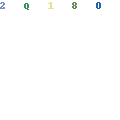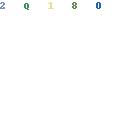
By mid 19th century, Switzerland was beginning to be acknowledged as a horology capital of the world. Patek had arrived from Poland and Rolex was planning to move its headquarters from London to Geneva. Great watchmakers from Europe and America migrated to Switzerland to add to its horology eco-system.

America in the 1860s was emerging as a great watch making country. ELGIN, Howard and Waltham were already making the top 100 pocket watches of the world. But American labour costs were becoming prohibitive and watch-making was becoming unviable. Aristo Florentin Jones as Director of E Howard & Co., watchmaker in Boston, was already finding it difficult to run his company. What Dennison & Co., a leader in the watch business failed to do, Jones decided to try – to migrate to Switzerland in search of cheap and high quality watch making labour force. He did not land in Geneva like most other watchmakers. He landed in Schaffhausen in Eastern Switzerland on the bank of River Rhine, for the most unlikely reason.
A decade earlier, engineer Johann Heinrich Moser had set up a dam on Rhine to produce hydroelectricity. Jones was most enamoured to set up a watch factory that runs on electricity! He approached Moser to become a partner and Moser readily agreed. They named their company as International Watch Co. and till date all IWC watches carry Schaffhausen as an integral part of the branding in every watch they make.
On the back of modern engineering and technology from the US, Schaffhausen, located at the border between Germany and Switzerland brought a new dimension of engineering rigour to Swiss watch making. In the words of Roland Ott, Director of Communications of IWC, “Design is important but we will look for elegant technology solutions”. There is a Teutonic rigour and obsession with technical aspects in every stage of production. In 1903, IWC established its official moto “Good, solid craftsmanship from Schaffhausen”. Over the years, IWCs culture has been “to make watches which are more unstated and pure than in the French part of Switzerland.” So here is the ‘Germanic-Swiss’ watch!
One of the revolutionary watches that IWC made was in 1936, known to collectors as Mark IX – featuring a shatterproof glass, a rotating bezel, antimagnetic movement and starkly contrasting, luminescent hands and numerals. This was a special pilot’s watch. Mark IX was followed by Mark XI and Mark XII. Since 2003 the pilots watch has been named after the legendary spitfire, a time piece clearly modelled on superior technology and cool elegance.

IWC is known for its famous 81-, 85-, 852 calibre movements that were incorporated from 1940s in their automatic models, branded Ingenieur models. These also incorporated IWC’s anti-magnetic qualities. Ingenieur would not stop at 500,000 ampere/meters and could withstand a MRI scanner. The same features got incorporated also in the Marine Yatch Club models.
Left up to its technology image, IWC was involved in the development of the first quartz movement named Beta 21 quartz that was displayed in Basel Fair in 1969. IWC used Beta 21 in its legendary watch Da Vinci in the mid-70s. Since the days of its pilot watch, IWCs chronographed Da Vinci watches are hugely sought after by collectors.
The other popular model of IWC introduced in 1930s is called Portuguese. The watch is so named because the original watches were made with a special request from Portugal to incorporate a pocket watch movement into manufacturing a large wristwatch. Portuguese also continues to be an extremely popular make from IWC.
Jones and Moser could only run the business till 1880. Then the company passed on to an Industrial family ‘Raucheloenback–Vogel’ from Schaffhausen. Four generations of the ‘Raucheloenback–Vogel’ family ran IWC. The most unlikely descendant of the ‘Raucheloenback–Vogel’ family who managed IWC for a while was Dr. Carl Jung, the famous psychiatrist who is related by marriage to the family.
True to its tradition IWC always employed prominent technicians in the company. Johann Vogel as a Technical Director designed and developed all calibres till 1990. Similarly, Austrian designer Pallweber designed and manufactured the first digital watch in the world. IWC’s quest for new technology got the company to join hands with Porsche Design and IWC used Titanium for the first time in the industry in 1978. To make sure that IWC is no ordinary watch, bezels are rotated 16,000 times, 5 kg weights are slammed into them, they are dropped into tanks of salty water, mercilessly rattled around for 16 hours and then subject to freezing followed by baking. Should the IWC watch ever need a service or repair, the stock room can supply spare wheels and dials that date back to 1885.
Consolidation
By 1991, IWC Director Blumlein founded the LMH group with its headquarters in Schaffhausen. By then, the LMH group had taken over 60 per cent of Jaeger–LeCoultre and 90 per cent in Saxony based watch maker A.Lange and Sohne. Gunter Blumlein, another giant of the Swiss watch making industry who also like Hayek led the industry out of crisis by the 70s succumbed to a takeover in 2000. His group, the LMH was acquired by Richemont. In 2001, it was the end of another great watch making era in Switzerland.
By the time Richemont bought IWC and other brands, they were already owning the famous Vendome luxury group. More about Richemont Group in this column later.
Between its models of Ingenieur, Spitfire, Da vinci, Portuguese and others, IWC sells about 60,000 watches per year through its 700 outlets in the world including the Ethos boutique in Mumbai. At 60,000 a year, IWC makes about 10 per cent compared to Rolex’s 6,00,000 but almost three times that of Patek Philippe. Unfortunately Jones is hardly remembered as the American who integrated technology with Germanic rigour and gave a unique dimension to Swiss horology.

* This first appeared in Smarbuy, a supplement of Businessline on Aug 6, 2008







